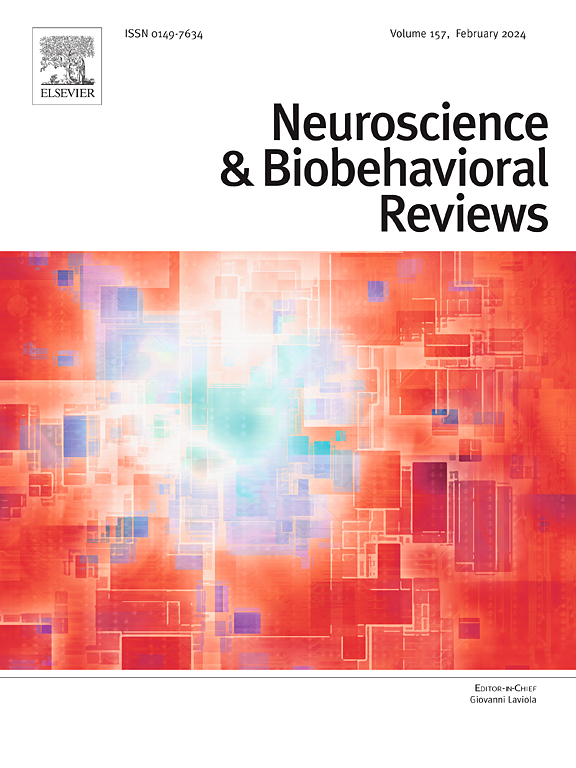Learning to fear novel stimuli by observing others in the social affordance framework
IF 7.5
1区 医学
Q1 BEHAVIORAL SCIENCES
引用次数: 0
Abstract
Fear responses to novel stimuli can be learned directly, through personal experiences (Fear Conditioning, FC), or indirectly, by observing conspecific reactions to a stimulus (Social Fear Learning, SFL). Although substantial knowledge exists about FC and SFL in humans and other species, they are typically conceived as mechanisms that engage separate neural networks and operate at different levels of complexity. Here, we propose a broader framework that links these two fear learning modes by supporting the view that social signals may act as unconditioned stimuli during SFL. In this context, we highlight the potential role of subcortical structures of ancient evolutionary origin in encoding social signals and argue that they play a pivotal function in transforming observed emotional expressions into adaptive behavioural responses. This perspective extends the social affordance hypothesis to subcortical circuits underlying vicarious learning in social contexts. Recognising the interplay between these two modes of fear learning paves the way for new empirical studies focusing on interspecies comparisons and broadens the boundaries of our knowledge of fear acquisition.
通过在社会支持框架中观察他人,学会害怕新的刺激。
对新刺激的恐惧反应可以通过个人经历(恐惧条件反射,FC)直接学习,也可以通过观察对刺激的同种反应(社会恐惧学习,SFL)间接学习。尽管存在大量关于人类和其他物种的FC和SFL的知识,但它们通常被认为是涉及不同神经网络的机制,并且在不同的复杂程度上运作。在这里,我们提出了一个更广泛的框架,通过支持社会信号可能在SFL中充当非条件刺激的观点,将这两种恐惧学习模式联系起来。在这种背景下,我们强调了古老进化起源的皮层下结构在编码社会信号中的潜在作用,并认为它们在将观察到的情绪表达转化为适应性行为反应方面发挥着关键作用。这一观点将社会可视性假说扩展到社会环境中替代学习的皮层下回路。认识到这两种恐惧学习模式之间的相互作用,为关注物种间比较的新实证研究铺平了道路,并拓宽了我们对恐惧习得知识的界限。
本文章由计算机程序翻译,如有差异,请以英文原文为准。
求助全文
约1分钟内获得全文
求助全文
来源期刊
CiteScore
14.20
自引率
3.70%
发文量
466
审稿时长
6 months
期刊介绍:
The official journal of the International Behavioral Neuroscience Society publishes original and significant review articles that explore the intersection between neuroscience and the study of psychological processes and behavior. The journal also welcomes articles that primarily focus on psychological processes and behavior, as long as they have relevance to one or more areas of neuroscience.

 求助内容:
求助内容: 应助结果提醒方式:
应助结果提醒方式:


